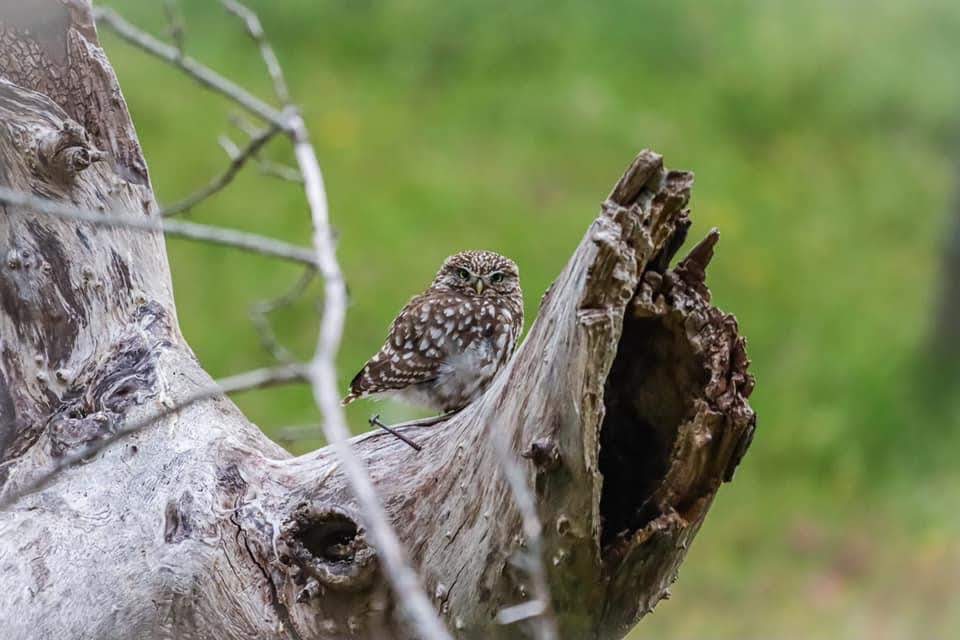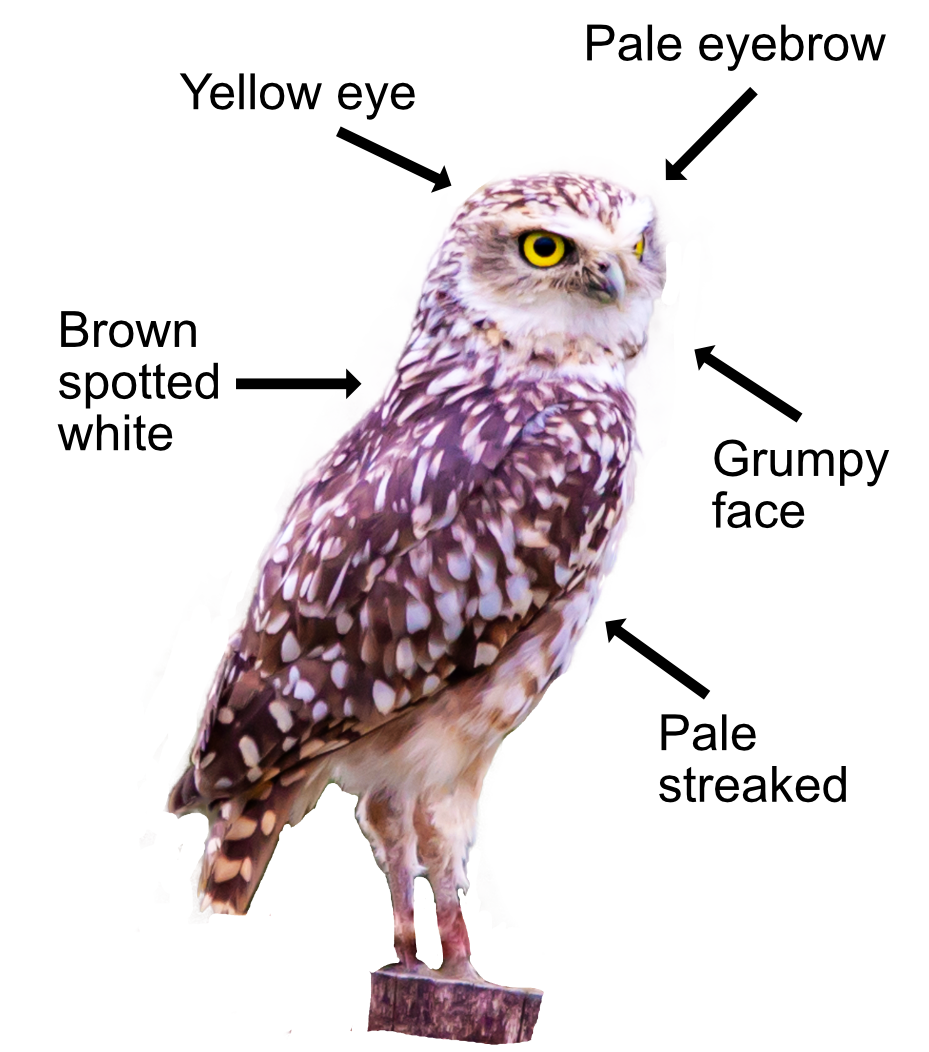
The Little Owl is small and unbelievably cute. It looks like a bump on a branch when perched in the daylight. It is so well camouflaged that you can be looking straight at it and not see it. Little Owls like farmland, orchards, parkland, and even hilly countryside. They were introduced into Britain about 100 years ago though they are widespread in Europe where they are also known as the 'Owl of Minerva'. All very Ancient Greek.
The Little Owl is the size of a fluffed up starling, looking like a cuddly toy. It has a brown back spotted with white, pale streaked underparts, and a flat looking head. On its face it has pale eyebrows over large yellow eyes, a hooked yellow bill, and a fierce grumpy expression. It bobs up and down when curious or alarmed. They fly close to the ground with an undulating style of flight. Their call is "kiew kiew", sounding very like a little yapping dog.

Little Owls hunt at dusk, after dark or around dawn, often from a favourite perch. They feed on insects, small mammals, small birds, and worms. They will also hunt on the ground, hopping or running to catch things on their rather long legs.
Just like wise owl, they nest in holes. Deciduous trees are their preferred sites though buildings, rock faces, and, at a push, rabbit burrows will do. In April, mum lays the 2-5 eggs (though usually 3 or 4) and incubates them until they hatch 28 days later. She alone looks after them for the first two weeks. Dad then joins in to help. Their breeding success is linked to the availability of small mammals as the youngsters need a lot of feeding. Before they are able to fly, the young owls clamber out onto a branch and explore round the nest site. They can eventually fly after 32 days. You will hear their territorial calling during autumn when the youngsters leave and search for their own places to live. Little Owls will often use the same hole year after year, some being in use for 25 years!
The Little Owl is resident and found in Central and Southern Britain, and Southern Scotland. They are territorial with the male normally remaining in one territory for all his life. If another male intrudes into his territory, he approaches the intruder and shouts his territorial call. If the intruder persists, he then flies at him aggressively. If this is unsuccessful, he will repeat the attack, this time trying to make contact with his sharp claws. There are about 6,000 Little Owl territories altogether in Britain, though this fluctuates. Currently their population is in decline, both here and elsewhere in Europe. Studies are needed to understand why.
Their Latin name is 'athene noctua' which comes from the Greek goddess 'Athena' (called Minerva by the Romans) and the Latin 'noctua' for 'night bird'. Athena's/Minerva's night owl. A Little Owl with an olive branch appears on a Greek tetradrachm coin from 500 BC (a copy of which appears on the modern Greek one-euro coin). There is a 5th-century B.C. bronze statue of Athena holding a Little Owl in her hand. The call of a Little Owl was thought to have heralded the murder of Julius Caesar so in Roman folklore they are the harbingers of death. Not bad for something so small and cute.